
The Noble Eightfold Path or Eight Right Paths is an early summary of the path of Buddhist practices leading to liberation from samsara, the painful cycle of rebirth, in the form of nirvana.

The meaning of a spiritual retreat can be different for different religious communities. Spiritual retreats are an integral part of many Buddhist, Christian and Sufi communities. There are many different types of spiritual retreats such as wellness retreats, mindfulness retreats, spa retreats, adventure retreats, detox retreats, yoga retreats, and religious retreats.
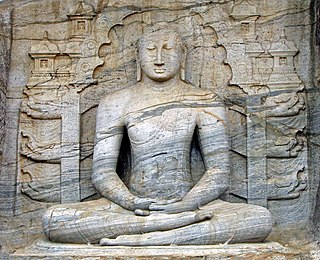
Samādhi, in Hinduism, Buddhism, Jainism, Sikhism and yogic schools, is a state of meditative consciousness. In many Indian religious traditions, the cultivation of Samādhi through various meditation methods is essential for the attainment of spiritual liberation.

Chögyam Trungpa was a Tibetan Buddhist meditation master and holder of both the Kagyu and Nyingma lineages of Tibetan Buddhism.

Mahāmudrā literally means "great seal" or "great imprint" and refers to the fact that "all phenomena inevitably are stamped by the fact of wisdom and emptiness inseparable". Mahāmudrā is a multivalent term of great importance in later Indian Buddhism and Tibetan Buddhism which "also occurs occasionally in Hindu and East Asian Buddhist esotericism."

Ayya Khema was a Buddhist teacher noted for providing opportunities for women to practice Buddhism, founding several centers around the world. In 1987, she helped coordinate the first-ever Sakyadhita International Association of Buddhist Women. Over two dozen books of her transcribed Dhamma talks in English and German have been published. In the last year of her life, she also published her autobiography: I Give You My Life.

Nisargadatta Maharaj was an Indian guru of nondualism, belonging to the Inchagiri Sampradaya, a lineage of teachers from the Navnath Sampradaya.
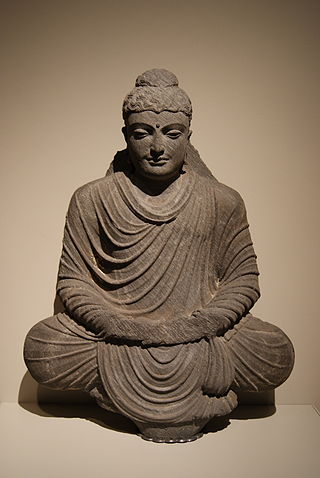
Ānāpānasati, meaning "mindfulness of breathing", paying attention to the breath. It is the quintessential form of Buddhist meditation, attributed to Gautama Buddha, and described in several suttas, most notably the Ānāpānasati Sutta.
Lamrim is a Tibetan Buddhist textual form for presenting the stages in the complete path to enlightenment as taught by Buddha. In Tibetan Buddhist history there have been many different versions of lamrim, presented by different teachers of the Nyingma, Kagyu and Gelug schools. However, all versions of the lamrim are elaborations of Atiśa's 11th-century root text A Lamp for the Path to Enlightenment (Bodhipathapradīpa).

Christian meditation is a form of prayer in which a structured attempt is made to become aware of and reflect upon the revelations of God. The word meditation comes from the Latin word meditārī, which has a range of meanings including to reflect on, to study, and to practice. Christian meditation is the process of deliberately focusing on specific thoughts and reflecting on their meaning in the context of the love of God.
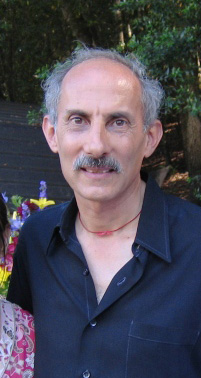
Jack Kornfield is an American writer and teacher in the Vipassana movement in American Theravada Buddhism. He trained as a Buddhist monk in Thailand, Burma and India, first as a student of the Thai forest master Ajahn Chah and Mahasi Sayadaw of Burma. He has taught mindfulness meditation worldwide since 1974. In 1975, he co-founded the Insight Meditation Society in Barre, Massachusetts, with Sharon Salzberg and Joseph Goldstein, and subsequently in 1987, Spirit Rock Meditation Center in Woodacre, California. Kornfield has worked as a peacemaker and activist, organized teacher training, and led international gatherings of Buddhist teachers including the Dalai Lama.

Ajahn Maha Bua was a Thai Buddhist monk. He was thought by many of his followers to be an arahant. He was a disciple of the esteemed forest master Ajahn Mun Bhuridatta, and was himself considered a master in the Thai Forest Tradition. Following the death of Ajahn Thate in 1994, he was considered to be the Ajahn Yai of the Thai Forest Tradition lineage until his death in 2011.
Tonglen is Tibetan for 'giving and taking', and refers to a meditation practice found in Tibetan Buddhism.

Sri Siddharameshwar Maharaj (1888–1936) was a guru in the Inchagiri Sampradaya founded by his guru Bhausaheb Maharaj, a branch of the Navnath Sampradaya, the 'Nine Masters' tradition in India. His disciples included Nath teachers Nisargadatta Maharaj, Ranjit Maharaj, Kaadsiddheshwar, and Ganapatrao Maharaj Kannur.
Mouni Sadhu was the pen name of Mieczyslaw Demetriusz Sudowski, a Polish-born author of spiritual, mystical, and esoteric subjects. He lived in Poland until World War II and eventually settled in Australia where he became a naturalized citizen. He wrote about Western and Eastern spirituality firstly, and also occultism both Western and Eastern, including Hermeticism, and the Yoga tradition of India. His greatest personal influence was Ramana Maharshi. The name "Mouni Sadhu" means "silent monk" in Sanskrit.
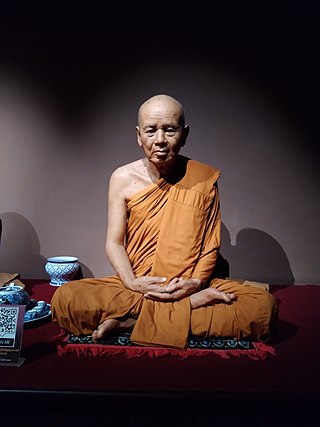
Phra Ajahn Thate Desaransi (1902–1994), also known as Ajahn Tate, Luangpu Thet Thetrangsi, Phra Desarangsee, or by his monastic title Phra Rajanirodharangsee, was a famous meditation master and Buddhist monk from northern Thailand. He was a disciple of Ajahn Mun and thus a first generation student of the Thai Forest Tradition and one of the founding teachers of the lineage. Following the death of Ajahn Mun in 1949, he was considered to be the Ajahn Yai, or the head of the Thai Forest Tradition lineage until his death in 1994.
Samatha, "calm," "serenity," "tranquility of awareness," and vipassanā, literally "special, super, seeing ", are two qualities of the mind developed in tandem in Buddhist practice.
Wantoat, named after the Wantoat River, is one of the Finisterre languages of Papua New Guinea. Dialects are Wapu (Leron), Central Wantoat, Bam, Yagawak (Kandomin), continuing on to Awara, though the last is only 60–70% lexically similar with Wantoat and Wapu. Major Wantoat villages are Gwabogwat, Mamabam, Matap, Ginonga, Kupung.
The Vimuttimagga is a Buddhist practice manual, traditionally attributed to the Arahant Upatissa. It was translated into Chinese in the sixth century as the Jietuo dao lun 解脫道論 by Sanghapala. The original text is no longer extant, but the work has survived in Chinese. The book was probably written in India and then later brought to Sri Lanka. Some doctrines of the Vimuttimagga have been associated with those attributed to the Abhayagiri monastery by Dhammapāla, but this has been disputed in recent scholarship.
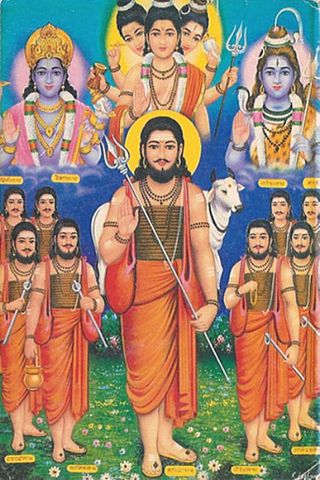
The Inchagiri Sampradaya, also known as Nimbargi Sampradaya, is a lineage of Hindu Navnath and Lingayat teachers from Maharashtra and Karnataka, which was started by Bhausaheb Maharaj. It is inspired by Sant Mat teachers as Namdev, Raidas and Kabir. The Inchagiri Sampradaya has become well known throughout the western world due to the popularity of Nisargadatta Maharaj.














